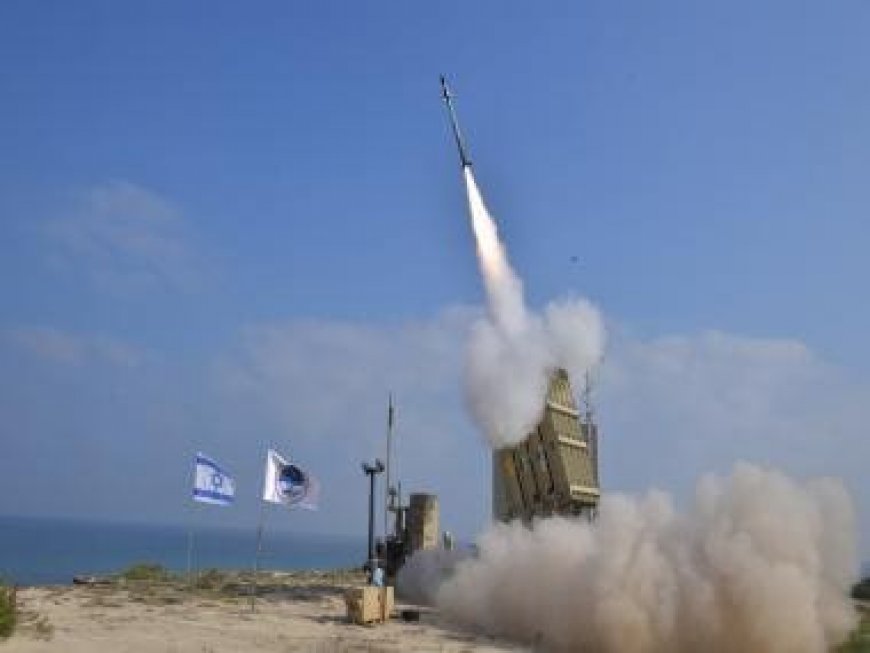To the sky, and beyond: How Israel-Palestine conflict led to world's first battle in space
To the sky, and beyond: How Israel-Palestine conflict led to world's first battle in space

During the early part of last week, Israel’s Arrow 2 missile system achieved a remarkable feat by effectively intercepting and neutralizing a suborbital ballistic missile suspected to have been launched from Yemen. This achievement is noteworthy from a technological standpoint, but it carries potentially significant legal and geopolitical ramifications.
According to a report by Haaretz, the Israel Defense Forces (IDF) successfully thwarted an Iranian-manufactured ballistic missile by utilizing the Arrow 2 anti-missile system. This incident took place on Tuesday, October 31, and it is believed that Yemeni forces may have been targeting Eilat, an Israeli city located along the Red Sea coast.
The Telegraph asserts that the interception and destruction of the missile occurred above the Kármán line, a well-recognized boundary of space situated at 62 miles (100 kilometres) above sea level.
While there have been previous instances of missile intercepts above the Karman line, as noted by Harvard-Smithsonian astronomer Jonathan McDowell, it is important to distinguish this event. Earlier cases typically involved interceptors engaging missiles launched by the same party for testing purposes. This marks the first instance of a missile successfully intercepting an incoming missile from an adversary in space. McDowell, an authority on space launches, elaborated on this distinction in an email exchange with Gizmodo.
It is worth mentioning that ballistic missile defence systems typically operate within Earth’s atmosphere. Although anti-satellite tests have demonstrated capabilities at higher altitudes, as seen in tests conducted by the United States, Russia, China, and India, these activities differ from the act of intercepting a missile in flight.
Tomas Hrozensky, a senior research fellow at the European Space Policy Institute, explained in an email to Gizmodo that the current information available is insufficient to confirm this situation. He also pointed out that mid-range ballistic missiles can reach altitudes well above 62 miles, and the “Arrow system is considered an effective counter-space capability due to its ability to intercept high-altitude targets.”
Yemen’s Houthi rebels have claimed responsibility for the attack. These rebels have been using missiles and drones supplied by Iran extensively since 2015 in their ongoing conflict with an Arab coalition.
According to Haaretz, the destroyed missile was a Qadar, an enhanced version of Iran’s Shahab 3 missile. The attack represents the farthest range attempt by the Houthis to date, estimated at 994 miles (1,600 kilometres), although the exact launch point remains unknown. This incident may possibly be the first combat to occur in space, as reported by The Telegraph.
The Arrow 2 system, operated by the IDF and designed specifically for intercepting ballistic missiles, stands out from other missile defence systems due to its capability to engage targets at high altitudes and, as demonstrated in this case, even in space. Ballistic missiles, like the one launched by the Houthis, typically follow a suborbital trajectory to deliver warheads to a predetermined area. This technology has historical roots dating back to the V2 rocket developed by the Nazis, which was the first ballistic missile used in warfare.
The history of Israel’s Arrow system traces back to the 1991 Gulf War when Israeli cities faced the threat of Iraqi Scud missiles. These Scuds managed to overcome US-supplied Patriot interceptors. In response, the IDF established the Homa (“Fortification”) Organization to create an effective missile defence system for the nation. Israel previously deployed the Arrow system in 2017, intercepting a stray Syrian S-200 missile with its Arrow 2, preventing potential civilian casualties, as reported by Haaretz. Last week’s incident marks the system’s first operational intercept of a ballistic missile, as reported by Breaking Defence.
The Outer Space Treaty (OST), officially titled the Treaty on Principles Governing the Activities of States in the Exploration and Use of Outer Space, including the Moon and Other Celestial Bodies, explicitly prohibits the placement of nuclear weapons or other weapons of mass destruction in orbit around Earth, on celestial bodies, or stationing them in outer space.
It, however, does not explicitly forbid conventional weapons, nor does it address the interception of missiles in space. Therefore, the destruction of a conventional ballistic missile by the Arrow system, even if it occurs above the Kármán line, does not seem to violate the OST. Jonathan McDowell concurs, stating, “As far as I know, it does not really breach any treaties.”
Given that the ballistic missile likely did not approach Earth orbit, this incident probably did not produce hazardous orbital debris, unlike the anti-satellite tests mentioned earlier. Indeed, as Tomas Hrozensky noted, “The implications on space safety will primarily depend on the altitude of interception. The occurrence and increase of interceptions, especially at higher altitudes reached by ICBMs, would undoubtedly have adverse and concerning effects on the safety and sustainability of the space environment.”
This incident not only signifies an advancement in Israel’s defensive technology but also establishes a new paradigm in strategic military considerations. Nations worldwide may need to reevaluate their offensive and defensive capabilities in light of this development, potentially impacting international security and discussions on arms control.
What's Your Reaction?

























































